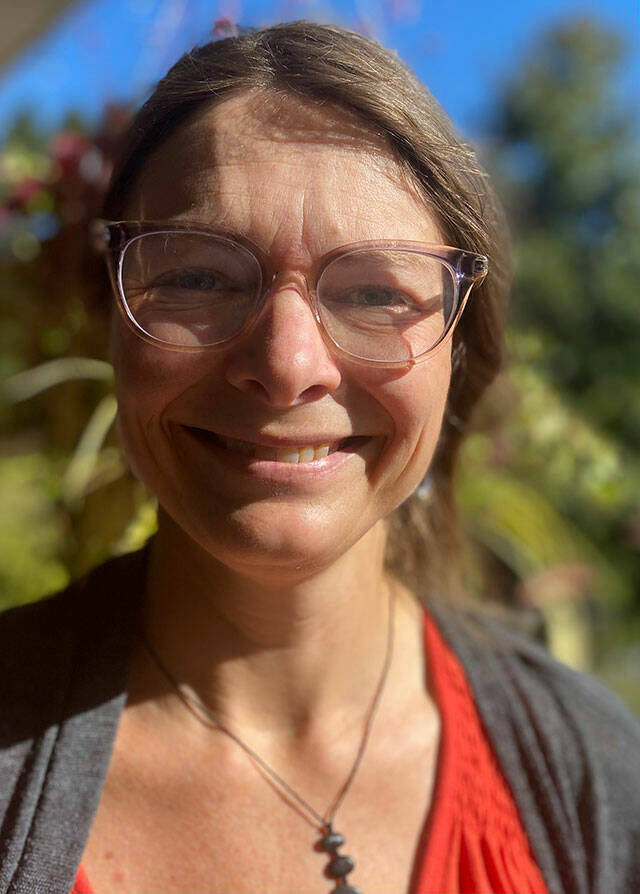Editor’s note: “Green Briefs” is a regular series of commentaries by eco-leaders on Vashon, presented in The Beachcomber in partnership with The Whole Vashon Project.
Last month, in a commentary on “supporting birds,” I wrote about the importance of birds and that North America has 29% fewer birds than it did in 1970. It’s clearly an unsustainable rate of loss, but what can we do?
The foremost concern is habitat, which we can largely repair by providing native plants. There is not enough land set aside to stem the losses, so we must do more on our own properties.
National Audubon agrees: “Landscaping choices have meaningful effects on the populations of birds and the insects they need to survive. The bottom line is this — homeowners, landscapers, and local policymakers can benefit birds and other wildlife by simply selecting native plants when making their landscaping decisions.”
Hummingbirds don’t always show a preference for native or non-native sources of nectar, but most birds have specific plant co-evolutionary relationships.
My yard is for the birds, and many live there. Every decision I make is weighed against the needs of others. It is about cooperation and giving back to restore balance to an ecosystem.
Many of the native plants great for birds are berries: Salmonberry, Thimbleberry, Serviceberry, Huckleberry and Elderberry all top the list. Beyond providing a source of seasonal fruit, these plants provide nectar, year-round shelter and structural elements of habitat. Plants like these can determine habitat qualities and the kinds of birds and other wildlife in your yard.
This is the ideal time of year to plant natives in the landscape. They’ll have maximum time to develop roots and relationships with soil microorganisms to get them through the dry summer. It is easy to do.
The most common method to make a new planting area for natives, called ‘sheet mulching,’ requires only cardboard (clean of plastic) and wood chips. It is great for soil health too. It is easier and arguably better to work on enlarging an existing bed or yard edge rather than starting an entirely new area. It is as easy as laying down flattened boxes and covering with a few inches of wood chips.
Stop here and let it rest for weeks or months, or plant right away by using a blade to cut a hole in the cardboard. Keep the cutout small but be generous with loosening soil in the planting hole. Once you pop the plant in, cover with chips again to smother weeds but not up against the newly planted plant.
According to the Washington Native Plant Society, “the key to landscaping with any plant, including natives, is threefold: plant the right plant in the right site and conditions for its mature size.” Natives are adapted to our local low-nitrogen soils, require less water and generally resist disease better, but it is still important to pay attention to soil type, moisture and light and to use plants that thrive in those conditions.
Details on a native plant’s preferred conditions and mature size can be found in online resources such as plant nurseries, the Plant Directory of the Washington Native Plant Society and National Audubon Society’s Native Plant Database. The latter also tells you which bird species each plant attracts and provides a list of local and online native plant nurseries.
Besides berries, Audubon’s “best for birds” list is crowned with large trees like the Big Leaf Maple, Madrone, Oregon Oak and Red Alder. The list is also filled with shrubs and smaller trees such as the Black Hawthorn, Ocean Spray, Salal and the Beaked Hazelnut. Low growing plants round out the list, with Nodding Onion, Yarrow, Red Columbine, Bleeding Heart Sword Fern and Oregon Grape. Most of these can be seen in the Native Habitat Garden that Vashon Audubon planted at the Heritage Museum.
Diversity is key. Think about providing a range of heights, colors, textures and layers in large trees, medium shrubs, low plants and decaying matter on the ground. Remember to leave room for growth into their full size. A relaxed approach to “fall chores” makes your yard more welcoming to birds and all walks of life.
Other bird-friendly practices include not using pesticides, building a brush pile and leaving dead trees and branches when possible. Leave the leaves under the plants and seeds for winter foragers. This is just a start.
Adria Magrath, vice president of Vashon Audubon Society, is a naturalist, college biology professor and citizen scientist engaged in the community. She volunteers for the Vashon Nature Center and works on the organic farm at The Country Store where you can find her most weekdays to ask your bird questions.



